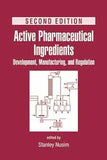Preface
1 Getting Started
1.1 Talking to your electronic structure system
1.2 Helpful tools
1.3 General $NBO keylist usage
1.4 Producing orbital imagery
Problems and Exercises
2 Electrons in Atoms
2.1 Finding the electrons in atomic wavefunctions
2.2 Atomic orbitals and their graphical representation
2.3 Atomic electron configurations
2.4 How to find electronic orbitals and configurations in NBO output
2.5 Natural Atomic Orbitals and the Natural Minimal Basis
Problems and Exercises
3 Atoms in Molecules
3.1 Atomic orbitals in molecules
3.2 Atomic configurations and atomic charges in molecules
3.3 Atoms in open-shell molecules
Problems and Exercises
4 Hybrids and Bonds in Molecules
4.1 Bonds and lone pairs in molecules
4.2 Atomic hybrids and bonding geometry
4.3 Bond polarity, electronegativity, and Bent's rule
4.4 Electron-deficient 3-center bonds
4.5 Open-shell Lewis structures
4.6 Lewis-like structures in transition metal bonding
Problems and Exercises
5 Resonance Delocalization Corrections
5.1 The Natural Lewis Structure perturbative model
5.2 2nd-order perturbative analysis of donor-acceptor interactions
5.3 $DEL energetic analysis
5.4 Delocalization tails of Natural Localized Molecular Orbitals
5.5 How to $CHOOSE alternative Lewis structures
5.6 Natural Resonance Theory
Problems and Exercises
6 Steric and Electrostatic Effects
6.1 Nature and evaluation of steric interactions
6.2 Electrostatic and dipolar analysis
Problems and Exercises
7 Nuclear and Electronic Spin Effects
7.1 NMR chemical shielding analysis
7.2 NMR J-coupling analysis
7.3 ESR spin-density distribution
Problems and Exercises
8 Coordination and Hyperbonding
8.1 Lewis acid-base complexes
8.2 Transition metal coordinate bonding
8.3 Three-center, four-electron hyperbonding
Problems and Exercises
9 Intermolecular Interactions
9.1 Hydrogen-bonded complexes
9.2 Other donor-acceptor complexes
9.3 Natural energy decomposition analysis
Problems and Exercises
10 Transition State Species and Chemical Reactions
10.1 Ambivalent Lewis structures: the transition-state limit
10.2 Example: bimolecular formation of formaldehyde
10.3 Example: unimolecular isomerization of formaldehyde
10.4 Example: SN2 halide exchange reaction
Problems and Exercises
11 Excited State Chemistry
11.1 Getting to the “root” of the problem
11.2 Illustrative applications to NO excitations
11.3 Finding common ground: state-to-state NBO transferability
11.4 NBO/NRT description of excited state structure and reactivity
11.5 Conical intersections and intersystem crossings
Problems and Exercises
Appendix A: What's Under the Hood?
Appendix B: Orbital Graphics: The NBOView Orbital Plotter
Appendix C: Digging at the Details
Appendix D: What if Something Goes Wrong?
Appendix E: Atomic Units and Conversion Factors


















